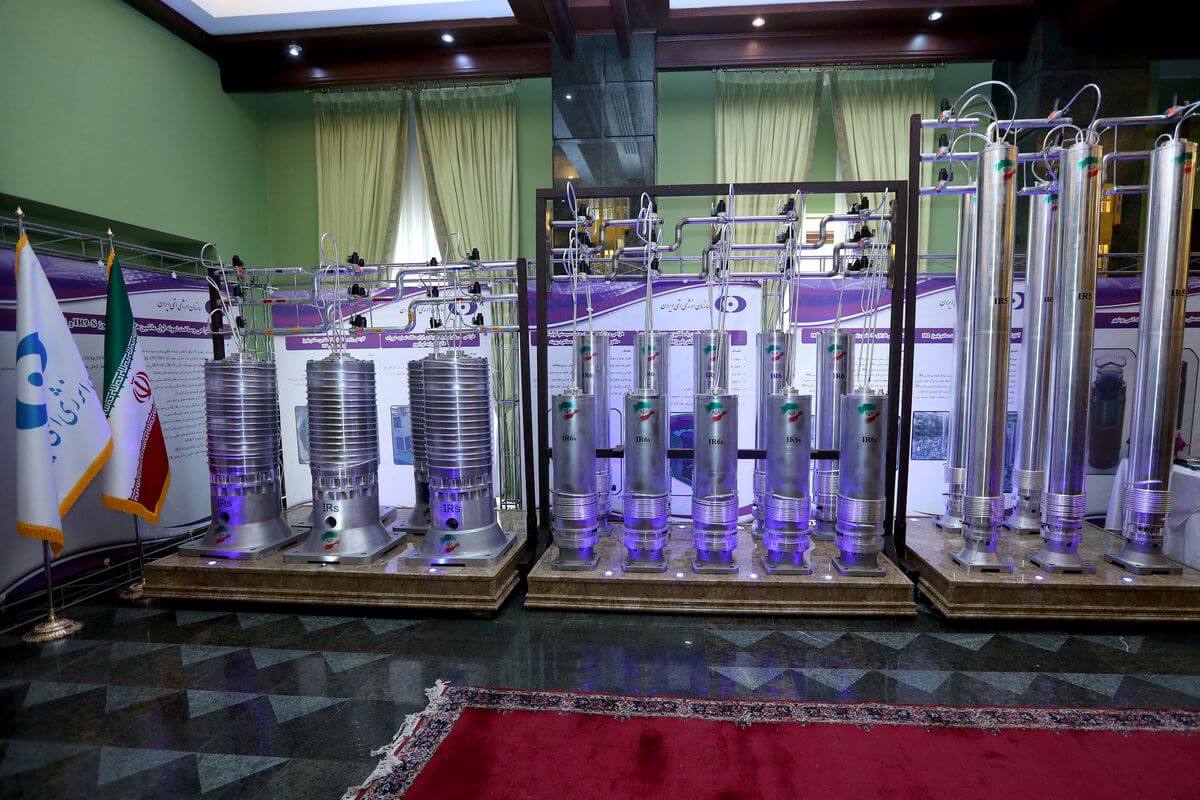Atomic Energy Organization of Iran (AEOI) spokesperson Behrouz Kamalvandi said on Sunday that Iran has started enriching uranium up to 20% at the Fordow nuclear plant following a report by the International Atomic Energy Agency (IAEA) that Tehran has further escalated enrichment.
Kamalvandi told Iranian media that the move was part of a plan to install 1,000 advanced IR-6 centrifuges and inject gas into them. “The IAEA was informed of injection of gas into a new cascade of IR-6 centrifuges at least two weeks ago,” he said, adding that “international media immediately published hyped reports with specific objectives in mind.”
The development brings to life a plan described by AEOI chief Mohammad Eslami last month, when he said that Iran planned to install new centrifuges at Fordow. He noted that it was part of Iran’s ‘Strategic Action Plan,’ which was adopted in 2020 and aims to protect Tehran’s interests against sanctions.
The IAEA said in a report seen by Reuters on Saturday that Iran has continued to escalate its nuclear programme by installing centrifuges at Fordow. It said the new machines could “easily change between enrichment levels,” indicating that Iran would be able to ramp up uranium enrichment to 90%, which is considered weapons-grade.
“On 9 July 2022, the Agency verified that Iran had begun feeding UF6 [uranium hexafluoride gas] enriched up to 5% U-235 into the cascade of 166 IR-6 centrifuges with modified sub-headers for the declared purpose of producing UF6 enriched up to 20% U-235,” the report said.
I know there's a sense of frog in boiling water around Iran's nuclear advances since 2019, but the fact that breakout time is nil, stockpiles at 60% continue to grow, advanced centrifuges keep coming online and we don't have real-time IAEA access is profoundly not good. pic.twitter.com/6Ch14EoxOE
— Ali Vaez (@AliVaez) July 10, 2022
The IAEA reported in December that Iran installed 166 IR-6 centrifuges at Fordow to enrich uranium by up to 20%. However, this is the first time Iran has announced its plans to install 1,000 centrifuges at Fordow. Furthermore, Israeli Defence Minister Benny Gantz warned back in May that Tehran also plans to install 1,000 centrifuges at the Natanz plant.
The IAEA has reported that Iran has been enriching uranium to 60% fissile purity, closer to the weapons-grade level of 90%. The 2015 nuclear deal, also known as the Joint Comprehensive Plan of Action (JCPOA), stated that Iran could only enrich uranium up to 3.67% for the next 15 years. Tehran has also been restricting IAEA officials from accessing its nuclear facilities, another violation of the JCPOA.
#Iran escalates uranium enrichment with adaptable machines at deep underground site
— Heshmat Alavi (@HeshmatAlavi) July 9, 2022
-allows Tehran to more easily escalate enrichment levels towards nuclear bombs (90%)
-Iran can escape detection for some time due to lag in UN inspectors' verificationhttps://t.co/i98CLx0iQo
Fars News reported that Tehran’s decision to escalate its nuclear programme was in response to the IAEA’s adoption of a resolution sponsored by the United States and its allies, which condemns Iran for failing to inform the agency of uranium traces found at three sites. The report, drafted by the US, the United Kingdom, France, and Germany, was the first time since 2020 that the agency formally condemned Iran.
In response to the resolution, Iran shut down 27 IAEA surveillance cameras across nuclear sites. Tealso announced that it would install two IR-6 advanced centrifuges at the Natanz facility to enhance its ability to enrich uranium rapidly. An IR-6 centrifuge spins uranium ten times faster than other centrifuges. The move could allow Iran to quickly add to its stockpile of enriched uranium, which the IAEA says is sufficient to produce a nuclear weapon.

